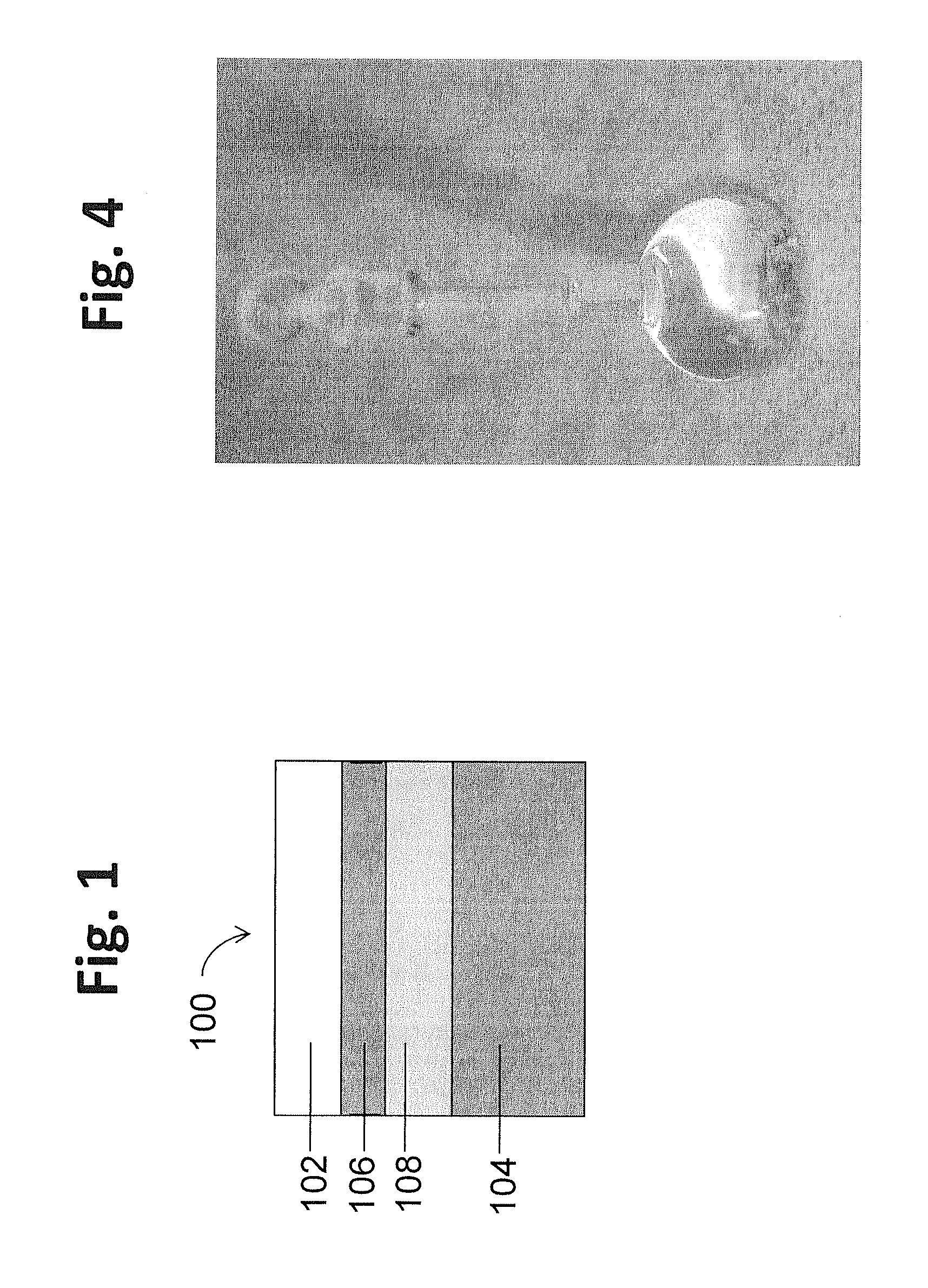Solution processible hardmasks for high resolution lithography
a technology of processible hardmasks and high resolution lithography, which is applied in the direction of liquid/solution decomposition chemical coating, instruments, photomechanical equipment, etc., can solve the problem that the thin resist layer does not have the etch budget to transfer patterns
- Summary
- Abstract
- Description
- Claims
- Application Information
AI Technical Summary
Benefits of technology
Problems solved by technology
Method used
Image
Examples
example 1
Preparation of Metal Oxide Materials
[0132]This example describes a method that has been used to prepare metal oxide precursor solutions comprising polyoxometal clusters based on hafnium (Hf), zirconium (Zr), aluminum (Al), tungsten (W), and titanium (Ti).
[0133]Metal-containing aqueous solutions were filtered and diluted before combining with diluted polyatomic anion solutions such as dilute H2SO4 solutions with optional addition of diluted H2O2 to form polyoxometal solutions with the concentration of specific components specified below. A photo of a representative metal oxide precursor solution is shown in FIG. 4, indicating the formation of a transparent clear solution.
[0134]AlOx(PO4)y: 0.56 M AlO+, 0.34 M PO42−;
[0135]HfOx(SO4)y: 0.4 M HfO+, about 0.26 M SO42−, and 1.2 M H2O2
[0136]Ti:ZrOx(SO4)y: 0.25 M TiO+, 0.25 M ZrO+, 1.5 M H2O2, and about 0.4 M SO42−
[0137]W:HfOx(SO4)y: 0.2 M HfO+, 0.04M WO42−, 0.6 M H2O2, and about 0.13 M SO42−
[0138]The polyoxometal solutions were then used to...
example 2
The Optical and Dielectric Properties of the Metal Oxide Hardmask
[0139]The optical and dielectric properties of the metal oxide materials formed in Example 1 were evaluated. Specifically, a precursor from the aluminum oxide phosphate AlOx(PO4)y family described in example 1 was spin-coated onto a Mo film to form a coating layer (also referred to as film) with a thickness of 110 nm. The aluminum oxide phosphate layer was cured at 350° C. although a process temperature in the range of 300 to 1000° C. can be used to make film or layer with a thickness of 2 were then formed by evaporating an array of Al dots onto the aluminum oxide phosphate layer. The optical properties of the film such as refractive index n and the extinction coefficient k of at different wavelength were extracted using a J.A. Woollam VASE ellipsometer and the results are shown in FIG. 5A. The dielectric properties of the film were extracted from MIM capacitor I-V / C-V data and shown in FIG. 5B. The optical and dielect...
example 3
Compatibility Studies of Metal Oxide Material on Various Substrate Surfaces
[0141]This example describes compatibility studies of the deposited materials on various substrate surfaces to determine the appropriate pre-treatment conditions to render the substrate surfaces hydrophilic and suitable for metal oxide coating. The polyoxometal precursors were made using the procedure outlined in Example 1.
[0142]Spin on carbon (SoC) hardmasks and silicon based anti-reflection coatings (Si-ARC) or layers on silicon wafers have been used as substrate surfaces. The Si-ARC and SoC materials are commercially available, and while used here for illustrative purposes, may not be representative of other materials with the same general function. The Si-ARC refers to a polymer containing Si with organic units or halide bound to the silicon, which are generally polysiloxanes. The Si-ARC coating on silicon wafer had a thickness of about 30 nm, comprises >30% silicon and was subjected to a 220° C., 60 s po...
PUM
| Property | Measurement | Unit |
|---|---|---|
| thickness | aaaaa | aaaaa |
| thickness | aaaaa | aaaaa |
| thick | aaaaa | aaaaa |
Abstract
Description
Claims
Application Information
 Login to View More
Login to View More - R&D
- Intellectual Property
- Life Sciences
- Materials
- Tech Scout
- Unparalleled Data Quality
- Higher Quality Content
- 60% Fewer Hallucinations
Browse by: Latest US Patents, China's latest patents, Technical Efficacy Thesaurus, Application Domain, Technology Topic, Popular Technical Reports.
© 2025 PatSnap. All rights reserved.Legal|Privacy policy|Modern Slavery Act Transparency Statement|Sitemap|About US| Contact US: help@patsnap.com



